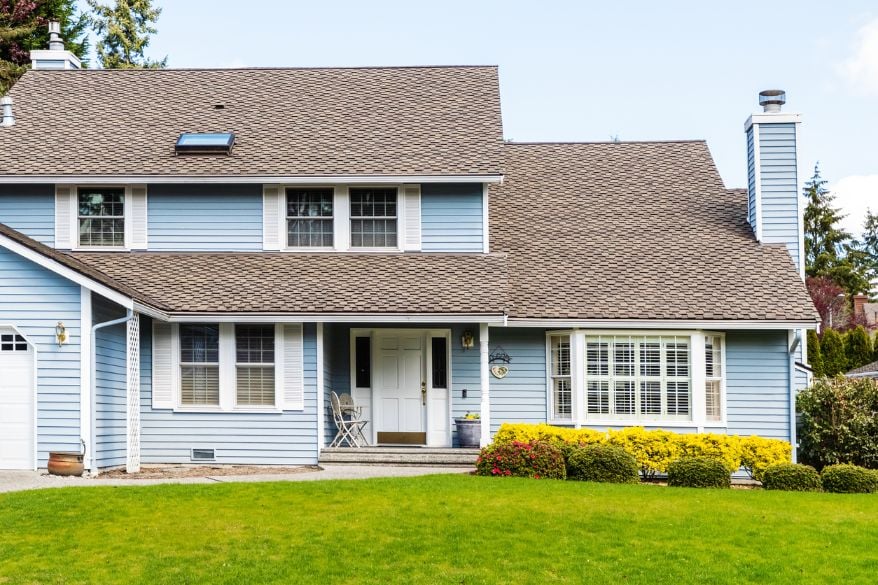8 Ways to Finance Home Improvements
6 Min Read | Last updated: October 31, 2024

See options for financing home improvements including a personal loan, home equity loan, home equity line of credit (HELOC), cash-out refinance, and credit cards.
At-A-Glance
- When making improvements to your home, paying with cash can sometimes earn you a discount.
- But if you need to borrow money, researching your options usually is useful. The right approach for you can save you money and reduce long-term financial stress.
- It’s important to know how much you need (and can get) before deciding to move forward with your home improvement project.
Choosing the best way to finance home improvements can be as important to a project’s success as selecting the right contractor or materials. People often have numerous financing options, each of which has pros and cons depending on the scope of your project, value of your home, and your overall financial health. Because of that complexity, it’s worth taking the time to research your options.
Best Way to Finance Home Improvements
If you can afford it, using cash is typically faster and cheaper than other financing options because it eliminates debt, interest charges, and fees. But using cash isn’t always possible, particularly for larger projects like a kitchen remodel or room addition.
If you need to borrow money to finance a home improvement project, you generally have three potential sources:
- Banks, credit unions, and credit card issuers
- Government-insured or subsidized loans
- Yourself – more specifically, your retirement savings
Ways to Get a Home Improvement Loan: Banks & Other Lenders
Banks and other lenders, such as credit unions or mortgage lenders, offer several different ways to borrow money. Understanding these options will help you make the best decision for you.
1. Personal Loan
Finding a personal loan (sometimes marketed as a home improvement loan) is generally easy and can be a good option for midsize projects (like replacing your windows). Personal loans for home improvements require no collateral, and your credit score determines your interest rate.1 The better your score, the better your interest rate, and vice-versa. To save money, look for lower interest rates and fees, in addition to repayment terms that match your financial situation.
2. Home Equity Line of Credit (HELOC)
A home equity line of credit, or HELOC, is a form of revolving credit, like a credit card. You borrow within the credit line you’ve been granted (based on your home’s equity), and as you pay down what you owe, you can borrow more – hence the “revolving” part.1 This can be a good option for long-term or recurring home improvements. Interest rates are typically much lower than those for personal loans because HELOCs are secured loans with your home acting as collateral.2
HELOCs also are usually structured so that you can draw from your line of credit for a set period (typically 10 years), followed by a repayment period (typically 20 years). Your payment may increase during the repayment period since HELOCs are usually adjustable-rate loans.1,2 To better understand homeowner equity, read “How Do HELOCs Work?”
3. Home Equity Loans
Like HELOCs, home equity loans use your home as collateral and, in exchange, offer lower interest rates. But there are some key differences. A home equity loan is an installment loan, meaning that it’s for a fixed amount and is repaid on a fixed monthly schedule for an established term (typically 5-30 years). Expect to pay closing costs (2-5%) and other fees for these loans, sometimes called second mortgages. The good news is that the interest you pay may be tax deductible.3
4. Cash-Out Refinance
An alternative to getting a second mortgage is to refinance your original mortgage. To obtain the needed funds for home improvements, you take out a new mortgage that is larger than what you still owe on the original – and keep the difference. Keep in mind that you’re using your home as collateral for the extra funds. And you’ll likely pay closing costs and fees. It’s generally only a good idea to pursue this option if you can secure an interest rate lower than the rate on your existing mortgage.2
5. 0% APR Credit Cards
Some credit cards offer an introductory period in which you pay no interest. A 0% APR credit card can be a good option for a smaller project because it’s possible to borrow the money, without paying interest. But if you pursue this option, aim to pay off the balance before the 0% period expires – otherwise, you’ll be charged interest. Credit card interest rates tend to be on the higher end than other loan options.3 Your credit score plays a part in whether you qualify for a zero-interest card.
Government-Backed Loans for Home Improvements
Some government lending programs are designed to help with home improvements. These include:
6. HUD Title 1 Property Improvement Loans
The U.S. Department of Housing and Urban Development (HUD) insures home improvement loans made by private lenders so that they can make loans they might otherwise consider too risky.4 HUD Title 1 loans allow you to borrow as much as $25,000 (for a single-family house) – even if you don’t have equity in your home. That makes the loans appealing if you recently bought your house and need to make some improvements. Loan funds must be used to improve the livability of your home, so some improvements classified as luxuries may not qualify. Note that your application will be denied if your debt-to-income (DTI) ratio exceeds 45%.5
7. FHA 203(k) Loan
If you bought a fixer-upper, an FHA 203(k) loan may be a good fit. In this program, HUD insures a loan that combines your purchase price with renovation costs, then puts the renovation funds into a special account to use as an improvement project proceeds. That can help prevent contractual or financial missteps. Home improvements must be for acceptable property types.6
8. Borrow for Home Improvement from Your Own Retirement
You can borrow half or $10,000 of the savings in your 401(k) retirement plan (whichever is more) or up to $50,000 (whichever is less), and then repay it over five years.7 But this option carries risks. For one, some plans won’t let you add new contributions while you owe a balance against it. If you take a long time to repay yourself, it may significantly impact your retirement fund. And if you leave your job before the loan is repaid, you must pay back the loan within a few months or pay taxes and penalties. It’s a good idea to first consult a financial advisor before pursuing this option.
Keep These Principles in Mind No Matter How You Finance
There are two principles you may wish to keep in mind as you evaluate ways to finance home improvements:
- Know how much money you need – and how much you can get – from the start.
- Don’t pursue any home renovation project if it doesn’t make financial sense. For example, if you’re counting on making back your investment when you sell (you can’t depend on it), you end up owing more than your house is worth, or your renovated house would be worth way more than comparable homes in your area.
The Takeaway
Cash is king when it comes to home improvement. But if you need to borrow money, you have numerous options to finance a home improvement project. Let the scope of your project and your overall financial situation help determine which choice fits best.
1 “Pros and Cons of Home Improvement Loans,” Experian
2 “Pros and Cons of a HELOC,” Experian
3 “What Are the Pros and Cons of a Home Equity Loan?,” Experian
4 “TITLE I INSURED PROGRAMS,” U.S. Department of Housing and Urban Development
5 “Property Improvement Loan Insurance,” Federal Deposit Insurance Corporation
6 “203(k) Rehab Mortgage Insurance,” Department of Housing and Urban Development
7 “Retirement Plans FAQs regarding Loans,” Internal Revenue Service
SHARE
Allan Halcrow is a freelance writer concentrating in business, human resources, and diversity and inclusion. He is also the author of four books on management.
All Credit Intel content is written by freelance authors and commissioned and paid for by American Express.
Related Articles
7 Top Tax Deductions for Homeowners
To encourage home ownership, the federal government offers many tax deductions for homeowners that can lower taxes and put money back into their pocket – or their home.
How Much of a Down Payment Do You Need to Buy a House?
You may no longer have to make a big down payment to buy a home – but the traditional 20% down payment still has some advantages.
What Do You Need to Buy a House?
See what you need to buy a house with a conventional mortgage, including typical down payment requirements, credit score requirements, and proof of income.
The material made available for you on this website, Credit Intel, is for informational purposes only and intended for U.S. residents and is not intended to provide legal, tax or financial advice. If you have questions, please consult your own professional legal, tax and financial advisors.











